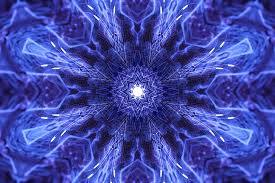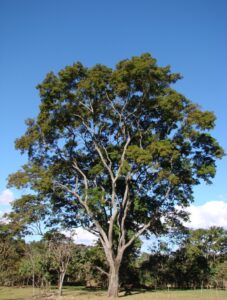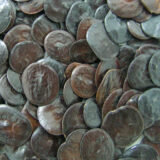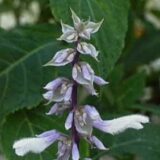Table of Contents
What is the Story Behind the Spirit Molecule?

What is DMT? [Define DMT]
DMT (as well as 5-methoxy-DMT) are found naturally occurring in many plants, animals and even people. The largest percentage of the plants which contain DMT are native to South America. It is true that DMT is also regularly manufactured (both in countries where it is legal and illegal), producing a synthetic version. These compounds are typically found for sale on the dark web and black markets. Pure DMT, however, is a more recent trend, as up until 1957, anyone around the world who experienced DMT would have been consuming a more primitive, tribal concoction…rather than a precise, laboratory-grade extraction. This first record would also be a DMT user experience, and one that would be taken very seriously.
The First Recorded DMT Experience
Ironically, the first recorded experience with pure DMT would be Stephen Szara, Chief of the National Institute of Drug Abuse’s Biomedical Research at the time. When Stephen Szara injected himself and some friends with DMT (75 mg intramuscular injection), he recorded the entire experience to the best of his ability. The initial effects began to manifest only a few moments into the trip, producing a nauseous, weak, elevated state. Szara was able to document a dilation of his pupils and his elevated pulse and blood pressure. He also documented a euphoria and amazing visuals, of which he could only describe during his trip as rapid changing, wonderful visions and brilliant colors. He would need to wait until the trip passed, almost an hour later, before he was able to fully record the experience.
Szara also noted that it only required 50 mg of DMT to bring amazing visual hallucinations. He made note that the eyes could be open or closed, not effecting the visuals either way. The peak was recorded to be about 15 minutes into the trip, with a come down period not lasting more than 45 minutes from there. Those participants of his study which received 125 mg doses or larger became catatonic and could not communicate, respond, or move. They would lose consciousness until the trip had passed.
It is also worth noting that Albert Hofmann, a well-known pioneer for his synthesis and work with LSD (most notably LSD-25), had also known of DMT. He synthesized a number of DMT analogs which received much less appreciation than his LSD work. In fact, most people would not care about his DMT analogs at all until about the mid 1960s.
When Did DMT Become Mainstream?

DMT has been used for (probably) thousands of years for its psychedelic effects, however, it has only recently become mainstream in a pure form. Interestingly enough, the first real “wave” of people wanted to try DMT and explore the possibilities the drug provided themselves after hearing about a rather terrible experience on DMT. A famous author by the name of William Burroughs visited Peru in 1960 trying to find Yage, experimenting with a number of plants and devices that induce hallucinations or are used as hallucinogens. Allen Ginsberg introduced famed psychonaut and psychedelic advocate Timothy Leary (also a famous author) to William Burroughs, and the two began corresponding back and forth about hallucinogens, specifically dimethyltryptamine, or DMT. Burroughs warned Leary about using DMT, explaining he had a horrible reaction, which was widely unpleasant and published in a popular magazine called “Encounter.”
Timothy Leary did take the warning seriously, but decided (as documented in “High Priest”) that his team should wait to judge for themselves until they try DMT in the appropriate settings. Leary, along with fellow researchers Richard Alpert and Ralph Metzner, are often credited with being responsible for DMT’s many years of popular psychedelic use, even to this day. If it weren’t for these three researchers deciding to experiment with DMT despite all of the negative experiences they had come across, there would have been no excitement about the drug.
One of Leary’s experiences was actually recorded and published in the Psychedelic Review. The team even began a prototype for a device that would allow a spiritual explorer on DMT the ability to communicate their state of mind back to the real world while they were tripping. Leary, Alpert and Metzner documented so many of their experiments and observations about how DMT experiences can differ depending upon set and setting that it is more than reasonable to attribute the widespread experiences today to their initial research. Ultimately, their work in the early 1960s pushed DMT into the spotlight and created a world’s worth of experimenters.
What is DPT? [Define DPT, the Drug]

N,N-Dipropyltryptamine and Dipropyltryptamine are known more commonly by the name “DPT.” DPT is a synthetic psychedelic that is similar in many ways to DMT. DPT is typically a little less predictable than DMT and the trips can be a little more intense at times, leading many psychonauts to claim it is harder to have a good trip on DPT. One of the reasons DPT is a “harder to handle” drug than DMT is because DPT lasts much longer. DPT has also been described as producing a feeling of intense paranoia, and although nothing is “right.” It can be very hard to stabilize the mind during some of the longer DPT experiences, which make it a drug that most psychonauts suggest only experienced psychedelic users pursue.
Just like DMT, DPT is ingested orally, injected intramuscularly, or even snorted. The most common method of administration, however, is vaporizing the freebase form of DPT. Vaporizing or smoking the freebase is most popular when DPT is used for recreation and also when used for research purposes. It has been used for so many things throughout the years…though it first appeared towards the end of the 1970s. It was first most commonly employed in psychological practices and therapy sessions. Some psychologists and therapists believed it was a wonderful aide for patients on their deathbeds, and it was prescribed as a way to reduce anxieties for these hurting patients.
DPT is a fast-acting, short-lived tryptamine that has a longer side-chain than DMT. Unlike DMT experiences, which typically last about 15-60 minutes, DPT experiences can last up to 4 hours. Many of the patients and recreational users alike have reported experiences of extreme peaks that have far exceeded those of DMT. When comparing DPT to LSD, about half of the people who have tried authentic, pure versions of both believe DPT is stronger of an experience. Almost all of the people who tried DPT explain it as exhausting, no matter how valuable an experience they may have had.
Pathways to Other Dimensions

A lot of records and experiences (from both famous authors and experts on the topic of psychedelics, as well as a plethora of other researchers) exist that detail intricate details of other worlds and realms one may see while under the influence of DMT. One author in particular, Cliff Pickover, has theorized that there are entire other parallel universes which can only be viewed and experienced while on DMT. It has been speculated by many people that DMT could be a way of changing one’s filter so that they can see other dimensions. Some tribes believed DMT was given to them by the Gods to help them access the heavens and other far away places.
DMT has had such a profound effect on the history of mankind, that no one truly knows exactly how far back DMT use may have been employed. Many authors, again Pickover one of them, have suggested that DMT has likely greatly influenced ancient artwork, especially things like cave paintings. A lot of other experts and pioneers on the topic, such as James Kent (a former editor of Entheogen Review), have described a huge array of creatures, beings, aliens and divine creatures which have been presented to those using DMT. Kent specifically notates that there is no limit to the types of creatures and things one can see in DMT visions. Kent has outlined the most prominent creatures experienced through DMT trips are those of aliens and elves delivering messages. The messages are usually deduced to environmental-plant-like messages such as “the plants are all interconnected,” “the plants have consciousness” and “the plants are the soul of the Earth.”
DMT and Anadenanthera
Anadenanthera is found abundantly growing throughout a large percentage of the Amazon and South America. In fact, some explorers have suggested it can be found in about 10% of the continent. It is extremely common near the Orinoco basin (located in both Colombia and Venezuela). It has been found growing in grasslands, wetlands, forests, and even in savanna areas. Anadenanthera was also introduced and cultivated in the West Indies for quite some time, only dying out right before the 1900s.

Anadenanthera is not only one of the most prevalent DMT producing plants available in South America used by the tribes, it is also one of the sources with the highest DMT content. Although many records and publications have indicated that the tribes of South America have turned to a number of plants for their DMT content, almost all of the tribes seem to prefer Anadenanthera when available. Most of the drinks that are made using this plant are described as miraculous.
Almost all natives of South America seem to be familiar with Anadenanthera and its vision inducing properties. Almost all tribes around and within the Amazon have their own special version of the drink. One popular drink is well-known around the world in modern times as “ayahuasca.” In some regions where Anadenanthera is less common, tribes turned to Mimosa hostilis, a DMT analog. One of the most common Mimosa drinks is known as the “wine of Jurema.”
DMT and the Virola Species
The Virola genre has many species, more than 60 in fact. These plants are a part of the nutmeg family, also known as the Myristiceae family. They are present throughout much of South America, as well as Central America. Because the more preferred plant for making ayahuasca and many DMT containing beverages is Anadenanthera, a plant which is only native to South America, plants from the more widely growing Virola genre have been found in many ayahuasca analogues. This is especially true in Central America and even in some parts of southern Mexico. Virola DMT preparations are sometimes more frequently in snuff form.
Ironically the Virola hallucinogenic snuffs seem to be most commonly employed in tribes around the Orinoco basin, the same region known as one the most frequent users of Anadenanthera DMT preparations. There are some instances recorded throughout Columbia and Venezuela where some tribes prefer to smoke Virola to induce trances and visions. Typically, better trips are obtained from more involved preparations involving the inner bark of the plant.
Many medicine men and shaman of tribes that regularly employed Virola for their hallucinogenic properties, have amazing botanist skills. Despite the fact that there are over 60 species in the Virola genre, many of them looking extremely similar but still having profoundly different effects, these tribal “psychedelic specialists” are able to predict a lot about the concoctions far before the preparation is complete. For example, they can describe exactly how long preparations take and certain parts of the plant take to change colors during preparation, even though each species is different, simply from examining the plant or its inner bark. They can also predict which plants will provide longer, or more hallucinogenic experiences. This skill is likely a byproduct of living in the area with these native plants, and regularly working with them to produce hallucinogenic snuffs and drinks.
Known Sources of DMT for South American Tribes

Although many DMT containing concoctions throughout South American tribes tend to possess one of the above-mentioned plants (Anadenanthera, Mimosa hostilis, or a species of Virola), there are still many other DMT sources throughout the continent. Many of these sources have been used as a substitute when one of the primary DMT ingredients are not available. Sometimes these other sources are used in combination with one of the primary DMT ingredients. Some of these sources have been transplanted and cultivated in South America, while others are native to the continent.
There are likely many sources of DMT in South America which have yet to be discovered, however, there are also many sources which have been identified. Many species of Acacia contain high quantities of DMT. Although this plant is a little more prevalent on other continents, it can still be found in South America. The Waika indians (of the Orinoco basin region in Venezuela) use the Acanthaceae justicia shrub’s leaves to create a powerful DMT extraction. Acanthaceae is also very common throughout Mexico. Canary Grass and Common Reed are available throughout South America. Tribes and DMT enthusiasts commonly seek out P. aruninacea for its extremely high DMT content and versatility in growth. Desmanthus illinoensis is hunted for its root bark which contains a lot of DMT that can be easily extracted. It is sometimes called “Prairie Mimosa.” Although Desmanthus is more commonly found in North America, it has been grown and used in South America by tribes for its DMT.
How is DMT Used Today?
Today, DMT is used fairly similarly to how it has been used throughout history. There may be a few set and setting differences between traditional and modern rituals (and users), however, the plants have remained the same, a lot of the preparations have remained the same, and as far as recent history goes for Western culture recreational use (within the last 50 years or so), freebase has remained the same. DMT seems to have barely made the cut as a modern, mainstream drug and had a really rocky start. Against all odds, DMT and its close relative DPT managed to achieve enough positive traction in the 60s and 70s to still be around today. In fact, research on the spirit molecule has become so plentiful that the drug often is known by all psychonauts.




